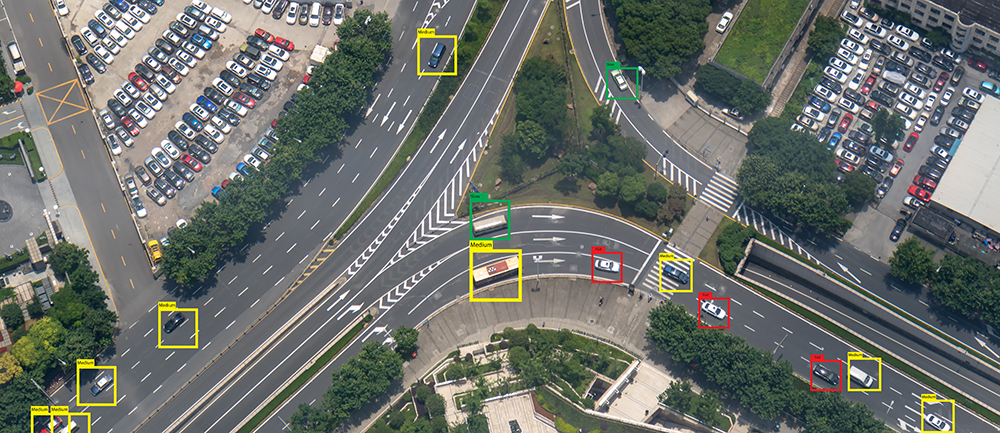
Around one million serially equipped cooperative ITS (C-ITS) vehicles are already on the market. The number is steadily rising. Two motorway operators - Asfinag (Austria) and Die Autobahn (Germany) - have both launched nationwide C-ITS road construction warning services. Meanwhile, Germany has just created a regulatory framework allowing driverless vehicles for use on specific infrastructure (SAE level 4 vehicles) into the market. They would operate in defined infrastructure domains.
The notion of an autonomous vehicle is a bit of a misnomer, since the vehicle is only autonomous from the driver, it remains interwoven into the traffic environment. It only replaces the senses of the driver and their decision-making with a combination of sensors, radio systems and automated decision-making. However, the thing that’s most difficult to automate is responsibility.
Automation eventually depends on the distribution of responsibility amongst the actors involved: road users - such as cars, motorcycles, vulnerable road users - vehicle operators (remember, the motorist may be phased out), road operators, public transport, etc. Agreeing on this distribution takes far longer than thinking up technical solutions to make automation happen.
Europe’s secret
Here, Europe is an interesting case to look at – while other regions work on demos, European automotive OEMs and road operators already deploy the communication system that automation requires for time-critical communication: C-ITS.
Why C-ITS?
Think split-second reactions preventing vehicles from bumping into each other and looking around corners in the direct vicinity of the vehicle, stuff so important you best communicate directly peer-to-peer (to our US readers: you would call C-ITS V2X).

So why is Europe doing so well here? The secret is governance. In ‘hard law’, Europe provided sufficient radio spectrum for C-ITS to work. Further to that, Europe invested in building a consensus between public authorities, road operators and car makers that established rules all actors could trust. This created the confidence to deploy C-ITS. Now some of these established rules mentioned above, having been tried and tested, are cast into law at European Union level to further strengthen the regulatory framework.
The ITS Directive
At EU level a revision of the ITS Directive – which has been in force since 2010 – is in the making. In it, Member States and European Parliament grant the European Commission the right to adopt ITS specifications to establish rules for ITS across the EU.
Here are a few examples: a good part of the regulatory framework for the eCall stems from the ITS Directive; the ‘would-have-been’ C-ITS Delegated Act was rooted in the ITS Directive; other acts cover real-time traffic information, known as RTTI, safe and secure parking and more.
After roughly 10 years it was time for the ITS Directive to be revised and updated, and the Commission pitched its legislative proposal in late 2021 (see box, Proposed new ITS Directive).
Where’s the beef?
The real argument lies, as so often, in the question of who is allowed to decide what. In the case of the ITS Directive, this concerns the data and ITS services in the Annexes. The datasets, geographical scope and deadlines are key to the speed of deployment and to costs. Now in the so-called ‘trilogues’ between EU Member States, represented by the Council, Parliament and the Commission, the stakeholders try to find a balance between broadly speaking to the needs of road safety/automation on the one side and budget responsibility on the other. The Commission and Parliament tend to be ambitious policy drivers while the Council curbs enthusiasm as it guards Member State budgets. The Council has been looking for the lowest common denominator - in a nutshell: Member States control all and no deadlines please! The Czech Council Presidency has kicked-off the trilogues and more are to follow: a sure sign that there is some wiggle-room for compromise, since the players could have also left thttable.
ITS about governance!
ITS is about governance, at least ITS geared at public goals, such as road safety, safe automation or sustainability. Europe’s leadership in this field is based on a regulatory framework that gives actors the confidence to deploy. The proposal contains key elements that further strengthen this framework and hence Europe’s global lead. This counts particularly for the text passages on security. This security authentication system may very well be the blueprint for any security authentication system for machine-to-machine (M2M) communication that operates in public spaces. C-ITS is a type of M2M communication enabled to operate in public spaces through a functioning regulatory framework.
Stability is required. The security authentication system and the principles for deployment are key to Europe’s drive to road safety and automation, so are the related interim measures. A further pillar on which Europe’s lead stands is its radio spectrum regulation. The ITS Directive does not touch radio spectrum, still it should be mentioned.
In the following fields, flexibility counts: ITS needs a flexible way to handle data and the geographical scope of ITS services, to allow the deployment of new services. I would dream of lawmakers taking a pragmatic approach and addressing datasets and services on a case-by-case basis; they should have the confidence that flexibility would not result in every forest road or footpath requiring ITS equipment.
Finally, ITS needs investment. In the taxonomy regulation, the Commission already states that a screening criterion for traffic management is needed for EU transport policy to progress. This should be stated again in the ITS directive to bridge the gap between the finance and mobility silos. Parliament has picked up the ball and proposed an according recital for the Directive, reminding the Commission to fully consider traffic management and ITS in the taxonomy’s technical screening criteria.
 As Halford E. Luccock of Yale University once said: “No-one can whistle a symphony. It takes an orchestra to play it.”
As Halford E. Luccock of Yale University once said: “No-one can whistle a symphony. It takes an orchestra to play it.”
So, think inclusive: the role of roads in automation is slowly emerging and may be bigger than assumed a few years ago. Automation is likely to be as much about roads as it is about vehicles.
About the Author:
Richard Lax is executive expert, EU affairs, Kapsch TrafficCom
Proposed new ITS Directive
The new ITS Directive focuses on a number of areas.
Automation & security: This is key, and the provisions proposed by the Commission here would plug a regulatory hole, if adopted. First there are the so-called ‘interim measures’ which regulate Commission and Member State competencies in emergency situations - in this case a cybersecurity breach in the European authentication system for C-ITS communication.
The absence of this clause was the stumbling block for the C-ITS specification that got rejected by the Member States in 2019. The proposal also outlines an EU-wide security authentication system, the security PKI (public key infrastructure). The PKI is essential for C-ITS to operate and one of Europe’s unique selling points for C-ITS. Keep your eyes peeled – it could and should play a key role in authenticating messages for all kinds of robots and drones in the future.

ITS data & services:
The Annexes carry most of the real content of the proposal, and here you will find the ITS data types (restrictions in place, state of the network, data for safe and secure truck parking, safety-related events and multimodal static travel data), their proposed geographical coverage and deadlines by when they should become available for which road networks. The road safety-related minimum universal traffic information service, already known from a delegated act, is proposed for motorways.
The principles:
The eCall is the best illustration of the instability, the absence of guiding principles in regulation causes. The 2G phase-out in Europe is not only proving a challenge for the eCall that depends on 2G cellular communication, it also highlights the dangers of a technology path that is not backward-compatible. The ITS Directive proposal looks at creating a stable regulatory environment for seamless ITS deployment. For this, aspects such as interoperability and backward compatibility, maturity or the link to technology neutrality and spectrum regulation are of key importance.
Linking ITS with the EU Green Deal and investment:
Parliament understood that investment and public funding for ITS would dry up if it were not considered in the EU’s taxonomy regulation. The taxonomy regulation classifies which criteria economic activities would have to meet to be considered ‘green’ and encourage investment and public procurement to focus on ‘green’ economic activities.
On 19 December 2022, the Commission published an FAQ on taxonomy, which starts to address the taxonomy regulation-related questions the Parliament has posed.
What does that mean ? A short EU law primer
A Directive is a type of EU law. It is directed at the EU Member States, which are obliged to implement it. EU Directives broadly speaking address the EU single market, predominantly consumer safety, interoperability and fair competition between EU companies.
For adopting on EU legislation the EU Member States come together as the Council. The Council is one of the two co-legislators, the other being the European Parliament which consists of elected Members of European Parliament (MEPs). The legislative procedure is the ‘ordinary legislative procedure’ - the most common.

Delegated acts and implementing acts are subordinated to their so-called ‘mother legislation’. In a nutshell: delegated acts are mainly found in Directives or Regulations (anything under the ‘ordinary legislative procedure’); they amend or supplement non-essential elements of legislation. Since this is where details are added to EU legislation, the Commission, Parliament and Council all have a say. Implementing acts are intended to facilitate the uniform application of the law across Europe and do not change any of the legal provisions of the law. Since it’s about implementation and this is a Member State responsibility they have most say here.
The European Commission, the EU’s civil service, is tasked with proposing EU legislation, while the co-legislators are tasked with political decision-making. The Council’s Presidency chairs the discussions within the Council and represents the Council vis-à-vis the Parliament. The Council’s presidency rotates every six months (so every Member State gets a go - providing loads of opportunities to travel to cool places). Parliament is represented by the Rapporteur on a certain dossier. EU legislation then passes through various readings and the ever-mysterious so-called ‘trilogue’, when Council and Parliament sit down and negotiate text.





